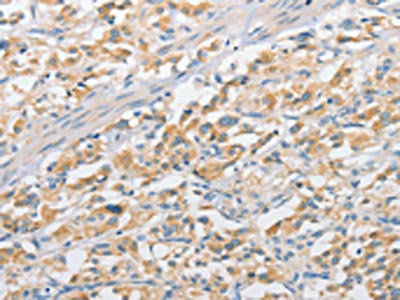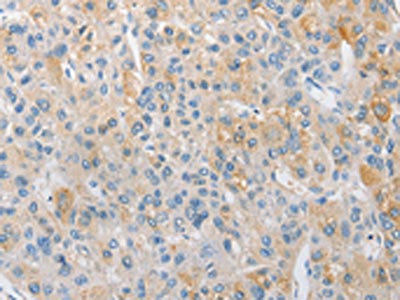
The image on the left is immunohistochemistry of paraffin-embedded Human thyroid cancer tissue using CSB-PA706929(APPBP2 Antibody) at dilution 1/25, on the right is treated with fusion protein. (Original magnification: x200)
APPBP2 Antibody

CSB-PA706929
ApplicationsELISA, ImmunoHistoChemistry
Product group Antibodies
ReactivityHuman
TargetAPPBP2
Overview
- SupplierCusabio
- Product NameAPPBP2 Antibody
- Delivery Days Customer20
- ApplicationsELISA, ImmunoHistoChemistry
- CertificationResearch Use Only
- ClonalityPolyclonal
- ConjugateUnconjugated
- FormulationLiquid
- Gene ID10513
- Target nameAPPBP2
- Target descriptionamyloid beta precursor protein binding protein 2
- Target synonymsamyloid beta precursor protein (cytoplasmic tail) binding protein 2; amyloid protein-binding protein 2; APP-BP2; HS.84084; PAT1; protein interacting with APP tail 1
- HostRabbit
- IsotypeIgG
- Protein IDQ92624
- Protein NameAmyloid protein-binding protein 2
- Scientific DescriptionThe protein encoded by this gene interacts with microtubules and is functionally associated with beta-amyloid precursor protein transport and/or processing. The beta-amyloid precursor protein is a cell surface protein with signal-transducing properties, and it is thought to play a role in the pathogenesis of Alzheimers disease. The encoded protein may be involved in regulating cell death. This gene has been found to be highly expressed in breast cancer. Alternative splicing results in multiple transcript variants.
- ReactivityHuman
- Storage Instruction-20°C or -80°C
- UNSPSC12352203

